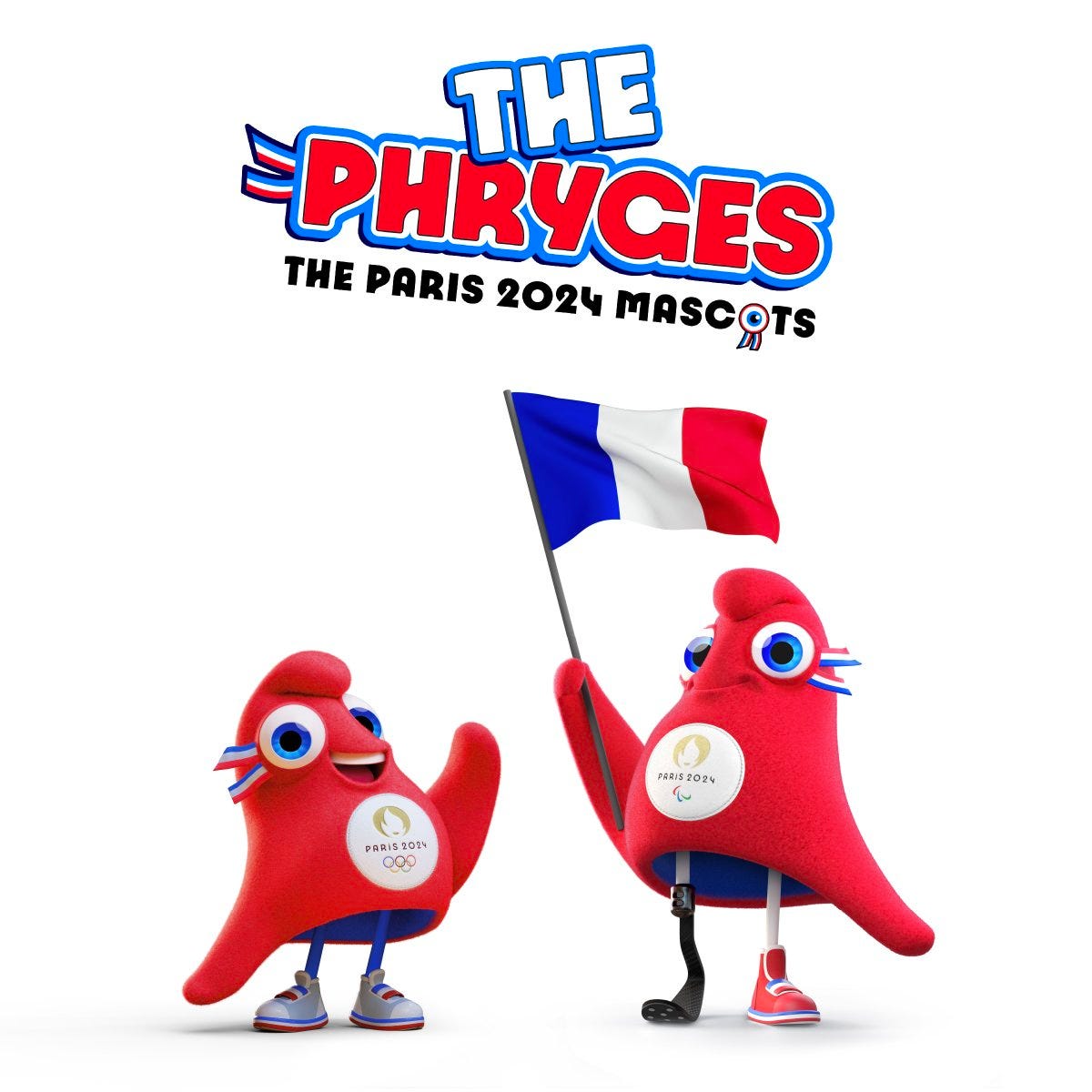French Crossroads: Protest-palooza, Olympic Glans, and Scooter Squabbles
Dreaming of beer in Burgundy
The days are still short, and the nights long here in the North of France. But after a crazy few months, I’m finally getting a chance to spend a little more time being social in Paris. Walking the streets at night, as I was doing in the photo above, it’s easy to see what the fuss is all about. It is dark and luminescent all at once.
Of course, France isn’t France unless millions of people are marching through the streets to express their anger with the government. Frankly, it had been far too long and far too quiet in the streets and the nation was overdue for something that would infuriate the majority of the population and paralyze its biggest cities.
Apparently, President Macron was feeling a bit nostalgic for the thrilling days of his first term when the people took to the streets for weeks on end to express a wide variety of grievances. Among the biggest sources of popular backlash was Macron’s plan to raise the retirement age in 2019.
For American readers who are unfamiliar with the concept, “retirement” refers to the notion that when you reach a certain age, you stop working and live off a combination of your savings and government benefit programs, aka “social security.” While retirement may be largely a thing of the past in the U.S., it is quite alive and well in France.
Though not so well, according to Macron. Given shifting demographics and economics and work trends, Macron has long argued that the French must work longer to make the system affordable. And so 6 months after being re-elected, Macron pulled his Greatest Hits out of the record sleeve and announced plans to raise the retirement age from 62 to 64.
Short of announcing plans to set all cats on fire, it’s hard to imagine a less popular policy. It’s so unpopular, in fact, the often bickering trade unions that represent 50 Shades Of The French Left - the CFDT, CGT, FO, CFE-CGC, CFTC, Unsa, FSU, and Solidaires - put aside their rivalries and called for a national day of strikes on 19 January.
And so, the fête des grèves took place last Thursday, bringing most of Paris’ public transportation to a halt and disrupting most of whatever it is that Parisians due on Thursdays. Or, as the Twitter account for one of the main regional train lines put it during its daylong trolling of disappointed riders, traffic was fortement perturbé.

I had been relieved that the police seemed to handle the demonstrations much better than in past years. The French national police typically seem to have two settings: 1. Stand around and do nothing. 2. Lob huge amounts of tear gas into the crowd and then act surprised when people start rushing around in a frenzy.
But then came a story today about a police officer who smashed a photographer who was already on the ground with his baton right in the entrejambes. Naturally, it was caught on video and immediately prompted a national outcry.

The victim went to the hospital with a testicle that had swollen to the “size of a tennis ball.” Surgeons operated, and when he awoke, he was informed that it was amputated!
That is not a recipe for pacifying protestors or provoking a reasonable dialogue about retirement reform. For some reason, it seems that having a conversation with opponents and trying to reach a consensus isn’t a thing in French politics. Instead, the Macron government just plans to steamroll its policy through and looks to be relishing a fight.
And so the battle could last quite a while. It was an impressive protest even if estimates of the number of protestors differed greatly between the protestors and the police. As is the case with every protest in the history of protests.
But opponents were feeling confident enough to call for another day of national protests on January 31 and hint that they might take more extreme actions like sabotaging refineries and other hijinks. So, I’ll have to download that strike calendar app again.
Rhymes with splitoris
Paris Olympic organizers unveiled the mascot for the 2024 summer games last Fall. And according to some critics, the design could make it hard for many men to find.
Terrible mascots are a traditional part of the Olympics, of course. In the case of the Paris Games, the idea was to make mascots that resemble the triangular Phrygian cap, aka the ‘liberty cap’, which was worn by revolutionaries and has become an important cultural symbol. I know this because I had to learn it for my citizenship interview.
But the French media felt that “The Phryges,” as they were named to maximize the cringe factor, resembled a certain part of the female anatomy that rhymes with splitoris. Or, as the Libération newspaper put it in a headline: “Vive les Phryges, les mascottes clitoris qui en mettent plein la vulve.” (“Long live the Phryges, the clitoris mascots that fill the vulva.” There is no doubt a better translation of that, but you get the idea.) “Many of us have also seen something else there: the cute red clitoris, with the clitoral glans sticking out at the top and the corpora cavernosa pointing to both sides like little wings,” the newspaper graphically explained.
Whatever you may have thought of the mascots, you will never be able to shake this image as you watch the Olympic Games next summer. Of course, once this connection had been made, the media just ran with it.
Libération, for example, noted that the symbol is fitting because in the French language, “France” is feminine (La France). And also, the prominence of this symbol would help educate the public as to what the clitoris actually looks like while also serving as an important counterbalance to the nation’s ultimate phallic symbol, the Eiffel Tower.
“So many changes after centuries of invisibilization where, not only the erectile organ of the vulva was forgotten from medical books, but was also absent from our (un)conscious representations (which go through architecture, design, fashion, etc., where the penis is always in majesty),” the newspaper continued.
Meanwhile, others suggested that if organizers were going to make the clitoris the symbol of the games, they should double down on the concept. Per The Guardian:
But in the inevitable social media debate around the clitoris-shaped mascots, one secondary school teacher said their simplistic triangular design could reinforce society’s vague notion of the under-discussed part of the female anatomy, suggesting biology teachers be brought in to redesign them.
Julia Pietri, a feminist writer and publisher who led a street-art campaign for more eduction on the clitoris, said of the Paris mascot comparisons: “I find it amusing because I campaigned for a long time to raise awareness of the anatomy of the clitoris, and four years ago when we launched, few people could recognise a clitoris. So today I’m happy and rejoicing that, thanks to all that’s happened in feminism, people can at least recognise the clitoris. It shows it’s now in popular culture and that’s a win.”
Let the games begin!
Scooter Squabbles
More than 4 years after the first electric scooter-sharing service arrived in Paris, locals will vote in April on whether to permanently ban the controversial micromobility mode of transport.
In an interview with Le Parisen newspaper, Paris Mayor Anne Hidalgo announced the referendum, which followed a lengthy review of the services by city officials. While the mayor said she favored a ban, she felt residents should have the final say.
The results of such a vote will be closely watched far outside of Paris because the city has become one of the largest markets for such services. In addition, the city had been a pioneer in establishing rules as part of an attempt to make e-scooters safe and acceptable to residents.
When such micromobility services first appeared several years ago, boosters hoped they would offer a more environmentally friendly form of personal transportation for cities like Paris that were struggling with pollution. Indeed, Hidalgo has led the charge to reduce — and in some cases eliminate — cars from the Paris city center.
In June 2018, U.S.-based Lime became the first company to introduce e-scooters in Paris. At the time, the city didn’t have any rules related to such services, and national law was fuzzy in terms of whether local officials even had any authority to regulate e-bike and e-scooter services.
By 2019, a total of 12 scooter and bike-sharing companies had launched in Paris. Residents were soon complaining of reckless riders on sidewalks and the eyesore of scooters being stacked on random street corners.
Later that year, Paris implemented a framework for scooters that limited speeds while spelling out codes of conduct. It also granted 3-year licenses to just three companies to operate: Lime, Dott, and Tier.
Despite efforts by the city and those companies, residents have continued to complain about scooters. The e-bikes, which must be parked in designated bike areas and are ridden primarily on the streets in the growing network of bike lanes, have gained greater acceptance.
But scooters remain “extremely divisive”, Hidalgo told Le Parisien. The city continues to receive reports of riders, typically tourists, riding the scooters on sidewalks, leaving them in parks, and even throwing them into the Seine.
David Belliard, the Paris deputy mayor for urban transport, told AFP that the city’s analysis determined that the scooters did not make sense from a cost-benefit perspective.
“They are in the way and they are dangerous,” he said in an interview.
So why not ban them outright? The scooters are also quite popular with some locals and visitors who see them as a low-cost, convenient, and fast alternative to the city’s metro, taxis, and car rentals.
Following the start of a review process last September, the three scooter operators proposed additional regulations that they hoped would address many of these concerns. And some have been reaching out to customers, asking them to contact the city to show support for continuing the scooter services.
But these efforts failed to fully persuade city officials. Instead, Hidalgo said Paris voters would be asked on April 2 to vote on the following question: “Do we or don’t we continue with free-floating rental scooters?”
Dreaming Of France
The New York Times released its annual list of 52 places to travel in 2023, and there were 2 destinations included from France.
The first was Nîmes, in Southern France. I’ve been a couple of times, and it’s a great place to explore France’s Roman history. The Times wrote:
Nîmes is that rarest of Gallic delicacies — a sunny southern French city with great charm and fascinating architecture and museums that hasn’t yet become thronged with tourists like Arles or Avignon.
The second destination: Burgundy Beer Trail. I didn’t even know that was a thing, but now I’ll have to add that to the list. According to the Times:
Wine lovers have long revered the great vintages of Burgundy. Now, beer lovers have their eyes on the Burgundy region, following the arrival of head-turning new breweries like Ammonite, Vif, Independent House and 90 BPM, all within 90 minutes of one another, and all rated among the best in France by fans on sites like Untappd and RateBeer.
Great Reads
Bloomberg claims that French executives are the world’s biggest workaholics. For those who took time away from work, the French got their third season of hate-watching Emily in Paris. But the real victims of this cultural crime are American women attempting to live their dreams in Paris, according to the New York Times.
For those who do visit, France Today highlights the transformation that has taken place along the quays of the Canal Saint-Martin in Paris, still on my list of places to check out. Reconstruction of Notre Dame is moving along with officials optimistic it could re-open next year. One report notes that Paris now has the most valuable tourism economy in the world.
Meanwhile, one French city believes Madonna may have bought a treasured painting thought to be lost in World War I and is asking the Material Girl to loan it back.
Oh, and Le NBA played a game in Paris.
Chris O’Brien
Le Pecq, France








